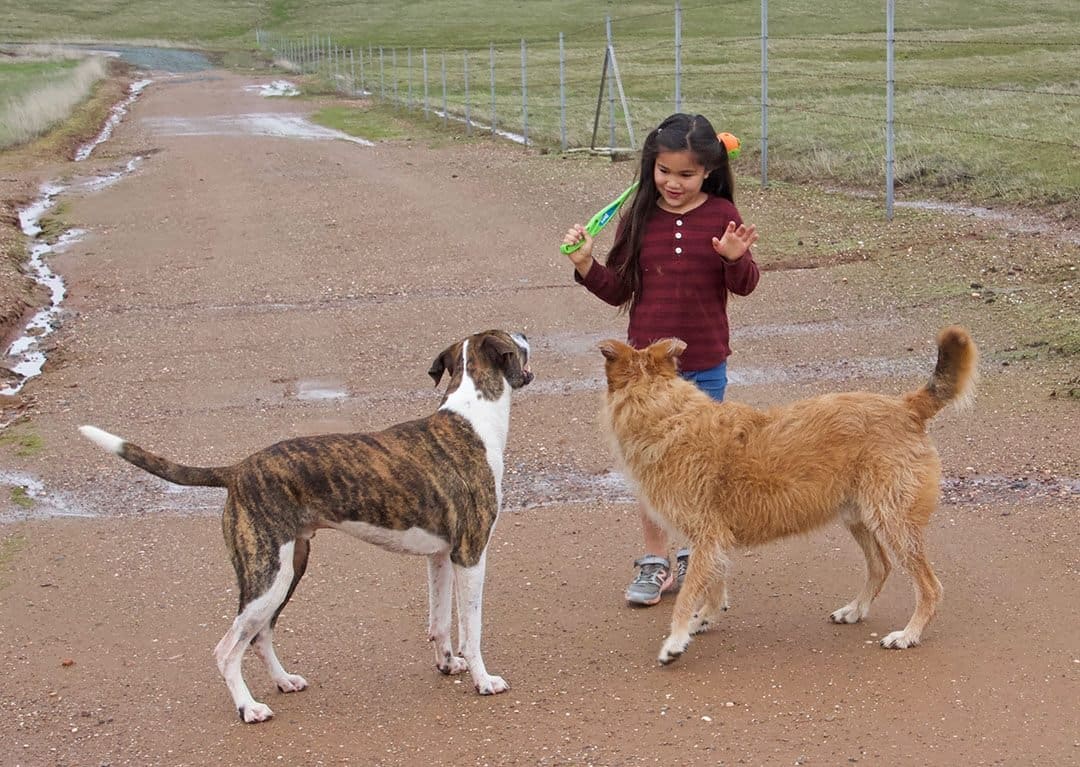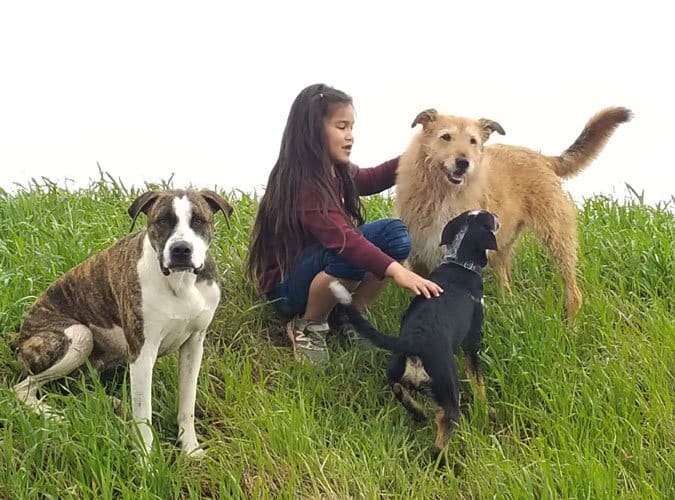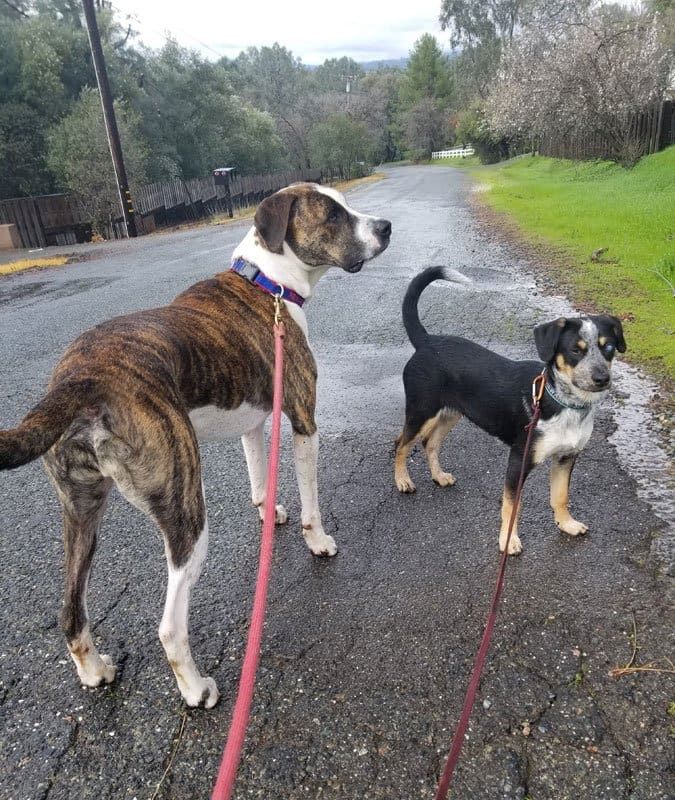One thing I don’t do very much of is walking my dogs on leash. I am super lucky; I live in an area with any number of safe, interesting places to walk my dogs off-leash – and there is almost no one else around! In the past few weeks, I have gone out for a dog walk with two different friends for a total of five walks, and we saw one other person on the trails once – and it was another friend of mine! With one of my former foster dogs!
However, I actually credit all this time OFF-leash with my dogs’ good ON-leash behavior. I’ll explain how in a moment.
I have been thinking about this a lot lately, for two reasons.
I’ve been teaching my foster puppy, Odin, to walk nicely on leash. Usually, when I raise foster pups, I keep them just long enough to be healthy enough to return to the shelter for spay/neuter surgery and to be adopted; I rarely have a foster pup past the age of three months. Odin is over five months old now, more than ready to be learning “big dog” life skills, and since he’s still here, we’re working on those skills now. Also, if and when I find the perfect family to adopt him, at this point, I want to make sure he’s got a great training foundation and will fit in anyone’s home seamlessly.
But I have also been helping a friend at her training center lately, taking on some puppy kindergarten teaching duties. And of course, THE number one thing the students in puppy classes struggle with is walking their puppies on leash without pulling.

We teach them to be conscious about when the leash is tight or loose, and to “stand like a tree” when the puppies pull, with “no bungee cord arms,” making sure the pups cannot pull to their humans in order to reach things they want. We teach them to notice and reinforce their pups for staying close to them and NOT pulling, so the pups learn that if they want to get places and reach things, they need to stay close to their humans – THEN they can go farther and faster. These tactics work – I know they do; I am seeing it with Odin – if they are applied consistently and frequently.
But if I had to share my absolute number one tip for teaching a dog to walk on leash? I’d have to say it’s the reward of getting to walk with me OFF-leash, in a space where they can run and get their zoomies out. I carry great treats (and in Woody’s case, an even higher-value reinforce, his Planet Dog Squeak ball), and reward them generously with treats and play, praise, and petting when they check in, respond to my cues of “WAIT,” “OFF,” “SIT,” and “HERE!”

As long as they are responsive to my cues, they get to stay off leash. If they aren’t so responsive, the leash goes on and we work on the same stuff. They get treats and praise and the opportunity to play with a toy, but the BIG prize for perfect, sharp responses is getting the leash unclipped, so they can run off-leash some more. It seems to work!
If your dog has great leash manners, share what worked for you. Do you have a “secret weapon” for teaching your dog to behave well on leash? What made the breakthrough in training? Or is walking nicely on leash still a struggle for you and your dog?







This is awesome advice, a bit counter intuitive at first, but it makes sense that if I train my dog to have good manners on leash, that he’ll behave better of leash as well.
Unfortunately my Australian Shepard/ Lab mix, who is 2.5 years old is so distracted especially by other dogs that I find it impossible to teach him not pull. We live in the city and because of his obsession with other dogs I stopped walking him. I usually walk with a cane, but stopped as he has caused me to fall twice.
This was a lot of help, I just read your other piece, on leaving dogs at home. When I take mine to the park, once I get home off leash he is in play mode and won;t necessarily respond to treats. He will have a toy or ball and gets it but doesn’t give it back. It takes forever to get him back on a leash. And like i said, he reacts a lot with other people or dogs, oddly enough not when we are running on the trail…